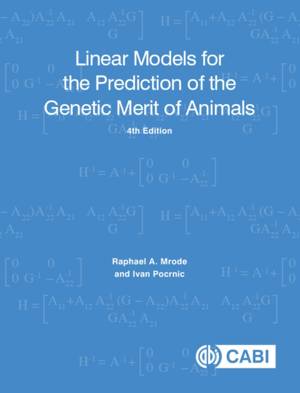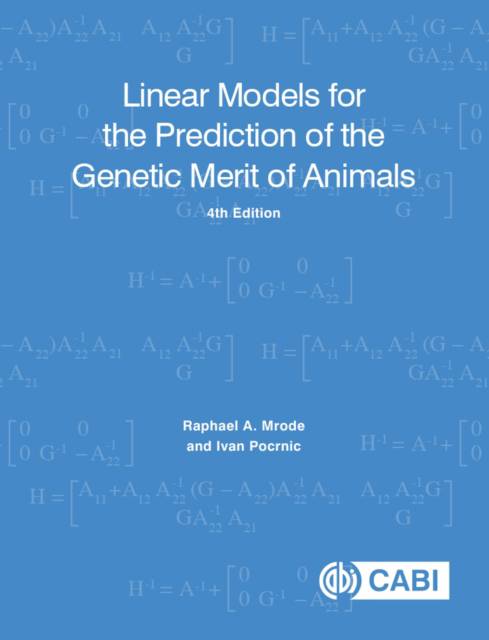
- Retrait gratuit dans votre magasin Club
- 7.000.000 titres dans notre catalogue
- Payer en toute sécurité
- Toujours un magasin près de chez vous
- Retrait gratuit dans votre magasin Club
- 7.000.000 titres dans notre catalogue
- Payer en toute sécurité
- Toujours un magasin près de chez vous
Linear Models for the Prediction of the Genetic Merit of Animals
Raphael A Mrode, Ivan Pocrnic
Livre broché | Anglais
109,95 €
+ 219 points
Description
Fundamental to any livestock improvement program by animal scientists is the prediction of genetic merit in the offspring generation for desirable production traits such as increased growth rate, superior meat, milk, and wool production. Covering the foundational principles on the application of linear models for the prediction of genetic merit in livestock, this new edition is fully updated to incorporate recent advances in genomic prediction approaches, genomic models for multi-breed and crossbred performance, dominance, and epistasis. It provides models for the analysis of main production traits as well as functional traits and includes numerous worked examples. For the first time, R codes for key examples in the textbook are provided online. The book covers:
- The relationship between the genome and the phenotype.
- BLUP models for various livestock data and structure.
- Incorporation of related ancestral parents and metafounders in prediction models.
- Models for survival analysis and social interaction.
- Advancements in genomic prediction approaches and selection.
- Genomic models for multi-breed and crossbred performance.
- Models for non-additive genetic effects including dominance and epistasis.
- Estimation of genetic parameters including Gibbs sampling approaches.
- Computation methods for solving linear mixed model equations.
Spécifications
Parties prenantes
- Auteur(s) :
- Editeur:
Contenu
- Nombre de pages :
- 412
- Langue:
- Anglais
Caractéristiques
- EAN:
- 9781800620483
- Date de parution :
- 19-10-23
- Format:
- Livre broché
- Format numérique:
- Trade paperback (VS)
- Dimensions :
- 178 mm x 229 mm
- Poids :
- 997 g







